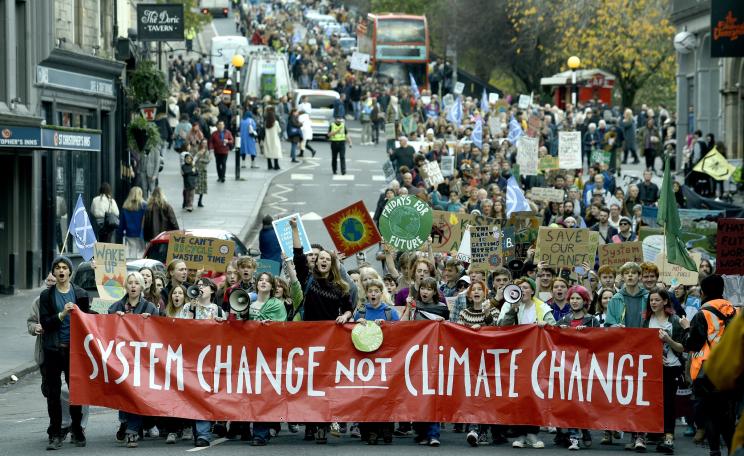For the institutions of our shock doctrine to beat the neoliberal model, our organisational resilience must improve.
Theorist and activist Graham Jones draws explicitly on systems thinking to provide an elegant, robust and precise proposal for progressive movements, including environmental campaigns, in his book, The Shock Doctrine of the Left.
This work has had some influence on how environmentalists organise, work collectively and respond positively to the environmental, economic and social crises that too often feel completely overwhelming. It provides a more philosophical grounding in how systems theory can be applied to practical ‘movement power’ style organising.
This article is part of the Movement Power series from The Ecologist.
William Harvey described the flow of nutrients in the blood in the human body as a system; Thomas Hobbes transposed this to the economy to produce the first systems analysis of social phenomena. The term 'shock doctrine' is taken from Naomi Klein's critique of neoliberalism and its exploitation of crises. Jones attempts to reclaim for learn from both systems and systems shock to develop an effective, and ethical, method for communities to respond.
Building
The aim of the text – again – is to provide a schema that can be used by humanity to move beyond the crisis of climate breakdown, and more generally capitalism. Jones is pragmatic and concise. He sets out four modes of organising: smashing, building, healing and taming.
Smashing is already a behaviour (or at least vocabulary) associated with the traditional left. Jones does not deny that for him this remains a necessary if insufficient mode of organisation. Rather than physical violence, however, industrial action and boycotting campaigns are, Jones argues, both forms of smashing.
Just as important as smashing is building. “For the institutions of our shock doctrine to beat the neoliberal model, our organisational resilience must improve,” Jones explains. This involves intense and intensive community building and networking.
We then move to healing. It is here that Jones would move the old left into new territory. We see the influence of family therapy based on systems theory.
Jones argues that the systems of oppression that make neoliberal capitalism possible require and create trauma – both of individuals and of society. Healing means feeling, sharing and processing this trauma. This necessity of feeling – including feeling empathy for every individual – denies oppressive politics access to Jones’s shock doctrine.
Practical
Finally, we have taming. Here Jones sets out a new response to the institution of the state. We cannot smash the state, he argues, as this creates trauma and chaos. Nor can we reform or ignore it. He proposes a different response. Change comes “through coordinating smaller but escalating shocks, each time increasing the power of people to organise beyond the state”.
Magic happens in the final chapter, ‘The Meta-Strategy’. Here, in true ‘systems’ style, Jones provides a simple flow diagram. For smashing, we see a ‘growing movement’ leading to ‘chaos’, then to ‘absorption’ and finally closing the loop to ‘growing movement’. For taming, we again see ‘growing movement’, which now leads to ‘gaining legitimacy’ and then to ‘reforms’ and back to ‘growing movement’.
Then all four of the charts are drawn together around the central phenomenon of ‘growing movement’. The strategies of smashing, building, healing and taming are autonomous but also mutually reinforcing. The micro-systems nest perfectly into one meta-system.
The Shock Doctrine of the Left is practical and profound, short and essential. Much should be gained by reading, rereading, sharing and adopting these ideas. Jones offers a fresh diagnosis of the ecological crisis, and a potential and novel solution.
This Author
Brendan Montague is editor of The Ecologist. This article is based on a book review that first appeared in the Resurgence & Ecologist magazine in 2018. It is published now as part of the Movement Power series.







